What does late blight look like and how to get rid of it?
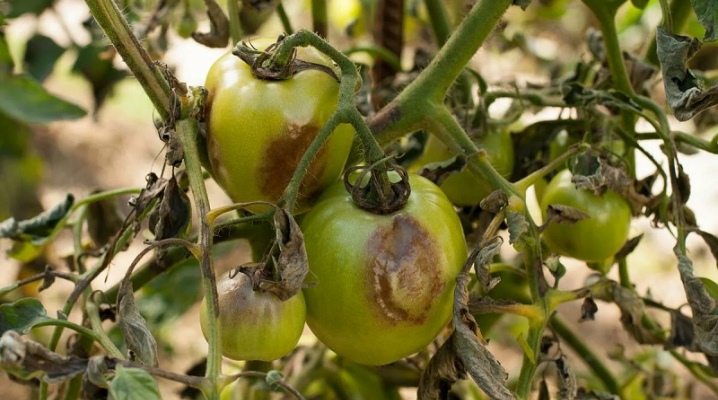
Almost every gardener can face a disease called late blight. Since this fungus has the ability to multiply rapidly, it must be fought immediately by combining agrotechnical methods with various kinds of drugs.
What it is?
Late blight, aka late blight, is one of the common fungal diseases characteristic of many horticultural crops, but most often "attacking" representatives of the Solanaceae family. According to the description, the external symptoms of the disease may differ depending on the weather conditions and the characteristics of the habitat. Late blight can affect all plant organs, including the trunk or root system, at any stage of development.
It is customary to refer to the first signs of the disease as leaf twisting and the appearance of characteristic spots, which, growing, transform into noticeable marks of a dark brown or even black hue.
Such formations first appear on the lower leaf plates, and then "crawl" onto shoots and even fruits.

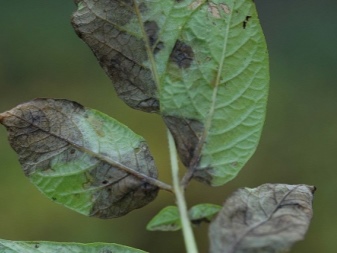
In most cases, they are also covered with a fluffy, snow-white coating. After the leaf blades, darkening of the stems occurs, and upon completion, the fruits already rot. I must say that these spots look quite memorable, so once "getting acquainted" with late blight, it is difficult to confuse it with other fungal infections. A dangerous disease spreads quickly and can destroy almost the entire crop in just a couple of weeks. However, it never begins to "act" immediately after planting - it takes a certain period of time for the development of the fungus.
The main reason for the appearance of late blight in the garden is still improper planting care and the lack of the required conditions for the development of crops. For example, fungus can enter a polycarbonate greenhouse on non-disinfected tools, through poor-quality seedlings or poor seed material. Thickening, which is characterized by a small amount of air and high humidity, is ideal for the development of late blight. By the way, the film protection for the soil is also capable of provoking the disease. This is explained by the fact that during temperature jumps, condensation accumulates from the inside of the canvas, as a result of which the humidity rises significantly.
Unfortunately, late blight is often a by-product of prolonged precipitation. It can be transmitted by wind and through the ground, carried on the feet of animals and the soles of boots. The disease appears when nightshades are planted year after year in the same place, as well as in the case of an increased lime content in the ground.
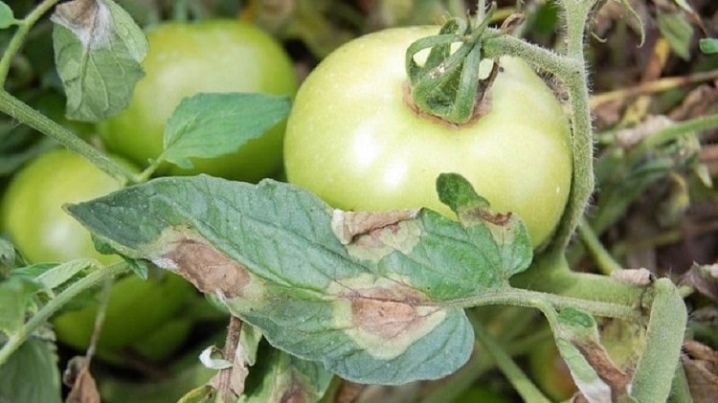
Agrotechnical control methods
Despite the fact that agrotechnical methods will not be able to completely get rid of late blight, they will greatly facilitate the control process. It is important to eliminate the thickening in a timely manner and prevent a musty and cramped environment in the beds. Temperature jumps can also contribute to the development of the disease, so you should not plant a crop until the likelihood of recurrent frosts disappears, plus young seedlings should be covered overnight. It is imperative to form a layer of mulch, which will allow you to control the level of moisture.And you should also be careful when using nitrogen-containing fertilizers and not let the fruits overripe.
Shrubs growing in the garden should be timely freed from dried or damaged foliage and flowers that do not form ovaries. For some crops, it is even correct to break off the leaves below the fruit. If a specimen is already seriously ill, then it must be destroyed by uprooting and burning in the distance. In the case when only spotted leaves are said about late blight, it will be enough to cut off and eliminate only them.
If possible, plantings should be protected from precipitation by a transparent canopy and sprinkling procedures should be limited.

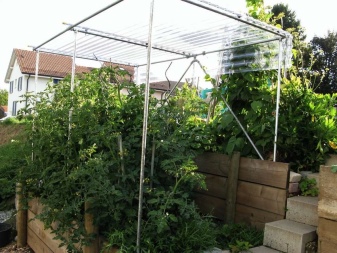
What drugs should I use for treatment?
It is possible to fully treat plants from a fungal disease with the use of systemic preparations of biological action and chemical fungicides. The former have a "milder" effect, but they do not harm crops.
Biological
For the functioning of biological products, beneficial bacteria are responsible, capable of "displacing" the fungus from the surface of plants. So, Alirin, Baikal, Fitosporin, etc. help to save the harvest. With the help of biological solutions, both root treatment and foliar spraying can be carried out. They do not pose a danger to humans and are equally effective both in the greenhouse and in the open field.
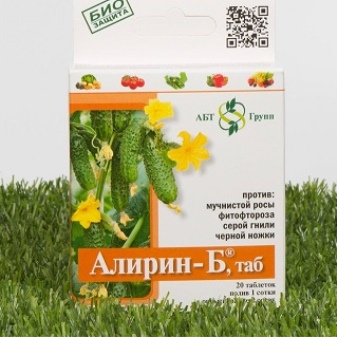
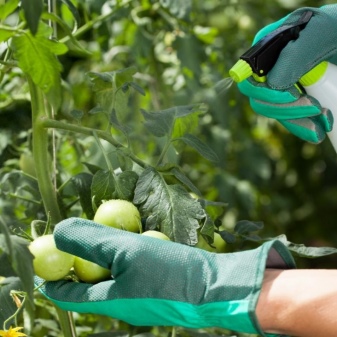
Chemical
Chemicals contain synthetic substances that destroy pathogens. Despite the fact that they very quickly cope with the disease, the poisonous components pose a danger to both humans and beneficial insects. Chemistry is not allowed to be used at the stage of fruit formation, and sometimes during flowering. Thus, the last fungicide treatment is possible at least 3 weeks before harvest. Popular among gardeners are "Ordan", "Profit Gold" and "Ridomil Gold", as well as "Revus".
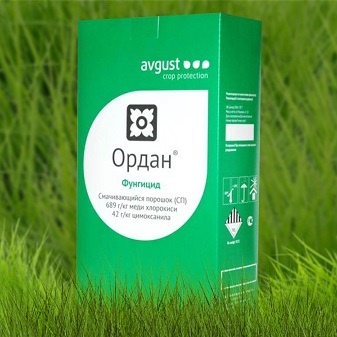
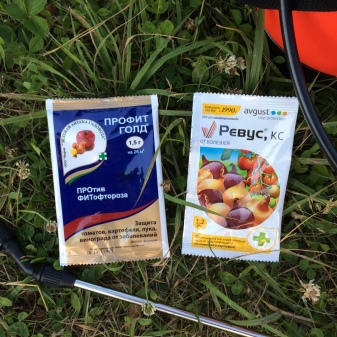
Overview of folk remedies
It is difficult to say which of the folk remedies for late blight is the best, but their absolute safety for both culture and humans allows you to simultaneously use several of them. The recipe for infusion of garlic with potassium permanganate is widely known. Its preparation begins by chopping 100 grams of garlic heads or stalks. The resulting mass is infused in a glass of pure water for about 24 hours, and then filtered and mixed with 10 liters of water, in which 1 gram of potassium permanganate powder is already diluted. The ready-made mixture is used for spraying crops.
The use of whole cow's milk whey is considered quite effective. The product obtained by fermentation is diluted with clean water in a 1 to 1 ratio and used for spraying plantings. Iodine milk also performs well. To create it, 1 liter of milk is diluted in 10 liters of water, as well as 20 drops of a three percent iodine tincture. Ash in the fight against late blight remains in the form of a powder, which is used to spray onto the ground and the plants themselves.
To make a yeast solution, 100 grams of live product is dissolved in 10 liters of water. A salt preparation is prepared in a similar way, only 200 grams of table salt has to be used for the same amount of liquid. Zelenka is used in an amount of 10 milliliters and requires dilution with 10 liters of water, and a couple of tablespoons of baking soda is also enough for 10 liters of liquid base. The recipe that requires the use of copper wire looks extremely curious. Its essence lies in the fact that before being transported to the open ground, the roots of the seedlings are wrapped in a thin metal rod.
It will be possible to fight the fungus with the help of kefir if a liter of the drink, fermented for a couple of days, is mixed with a bucket of water. To prepare a solution containing furacilin in its basis, 10 tablets of the drug are used, crushed to a powder state, and 10 liters of pure water. Boric acid can be used for this purpose even in several variations. In the first recipe, a teaspoon of the drug is dissolved in 10 liters of heated water. The second suggests combining 0.5 grams of the drug with 1 gram of copper sulfate and a liter of water. Finally, 10 grams of boric acid can be supplemented with 30 drops of iodine tincture and diluted in 10 liters of water.
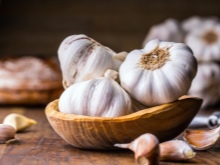

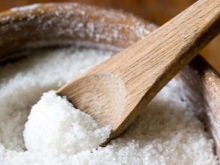
How to deal with the disease in different cultures?
Treatment of a culture from late blight can vary depending on which crop is in question.
On tomatoes
If the fungus has infected the seedlings, then there is not much to do. First of all, damaged bushes are completely eliminated, and then the soil has to be treated with the preparation "Fitosporin-M". If the culture has not yet dived, then individual containers can be immediately filled with soil spilled with the same "Fitosporin". Before planting, it is customary to treat the soil with "Alirin" or any other fungicidal preparation. As for infected mature tomatoes, it will take 4 to 5 times to spray them from late blight, maintaining an interval between treatments equal to one and a half weeks. The last time it is allowed to use chemicals at least 20 days before harvesting the fruits.
Many gardeners are of the opinion that sick tomatoes require not only treatment for the fungus, but also strengthening the immune system. For this purpose, "Oxygumat" is suitable, 100 milligrams of which are diluted in a bucket of water, or "Exiol", 1 milligram of the product is combined with 3 liters of liquid.
All tomatoes should be treated for the disease, and not just the affected specimens. Bordeaux blend, Quadris, Ridomil Gold and Shining are most suitable for this culture.
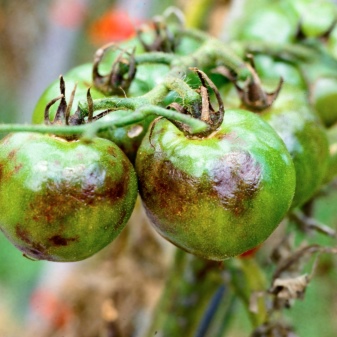
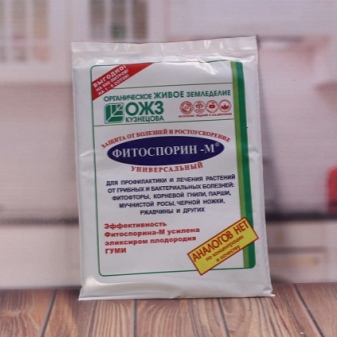
On potatoes
To prevent the appearance of late blight on potatoes, as soon as the tops reach a height of 25-30 centimeters, it will need to be sprayed with an appropriate product. For this purpose, copper sulfate can be diluted in a proportion of 0.2 grams per liter of water, one percent Bordeaux liquid or copper sulfate, 2 grams of which are combined with 2 liters of water. Before flowering, the culture must undergo treatment with "Epin", "Exiol" or "Oxygumat".
Severely affected potatoes are sprayed with Oxyhom or Ridomil MC. Finally, during the collection of tubers, "Alufit" will come to the rescue. Working with potatoes is required on a dry and calm, but sunless day.
If it rains immediately after the procedure, the culture will need to be re-treated.
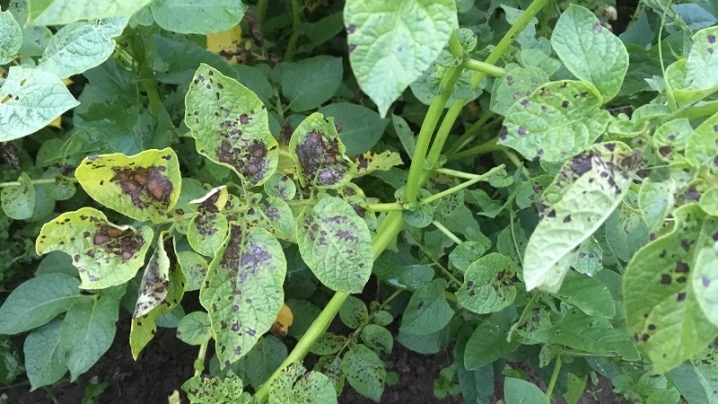
On others
Symptoms of the disease quite often appear on other nightshades - pepper and eggplant. In principle, their treatment is carried out in the same way as in the case of tomatoes, but it is better to use Antracol, Quadris and Consento.
Fungicides need to be alternated so that the plants do not become addictive. To prevent the appearance of disease on strawberries or violets, the soil should be shed with Ordan and Alirin solutions. The same preparations are suitable for prophylactic spraying of grapes. Late blight on an apple tree is treated with universal fungicides.
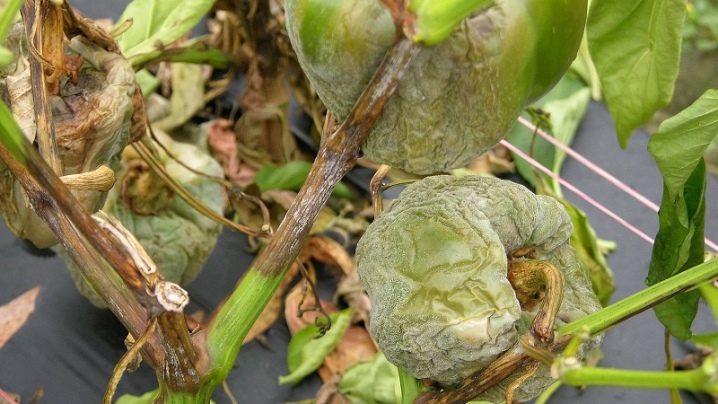
Prevention measures
Plant protection against late blight is also ensured by correct prevention. For example, initially, only those varieties should be selected that have strong immunity, which means they have increased resistance to fungi. It is extremely important to follow the rules of crop rotation - at least not to grow the same crops on the same bed for 2 years in a row. You should not have representatives of the nightshade family close to each other. If the potato becomes infected with late blight, then definitely after a couple of weeks the symptoms of the disease will be found on the tomatoes planted nearby. In principle, you can sow a so-called barrier in the form of beans or green peas between them.
Potatoes should be placed in leveled areas that do not allow moisture to stagnate, with good lighting and ventilation. Culture soil requires light, nutritious, with excellent drainage. Best of all, this culture feels itself in those beds where perennial grasses, beets, winter crops or corn used to live. It is extremely important for tomatoes to develop on soil that is mulched and treated with phytophthora. In the bushes, it is necessary to cut off the stepchildren and the lower leaf blades in a timely manner, and it is also necessary to ensure a constant supply of fresh air.
By the way, the garter of the stems will allow you to access the most hidden parts of the plant. A preventive measure is the direction of water when watering strictly under the root of tomato bushes, preventing drops from falling on the leaves, as well as frequent spraying with Bordeaux liquid. In specimens growing in a greenhouse, it is necessary to cut off the drying leaf blades in a timely manner, since it is they that often become a source of infection.
By the way, foliar treatments can only be carried out in dry weather.
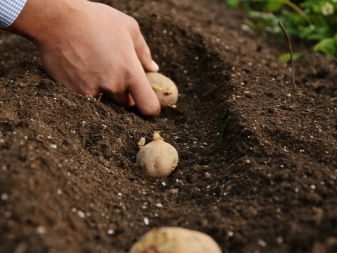
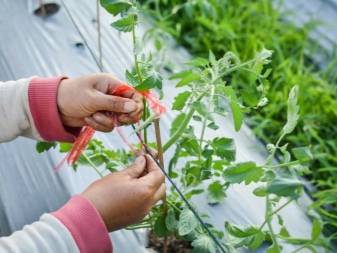










The comment was sent successfully.